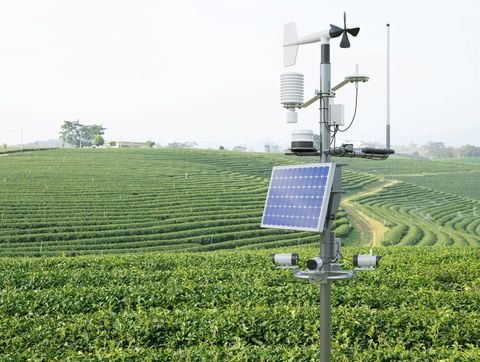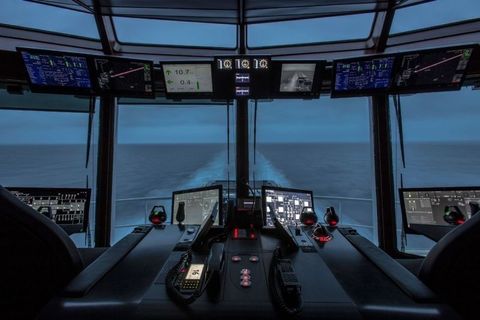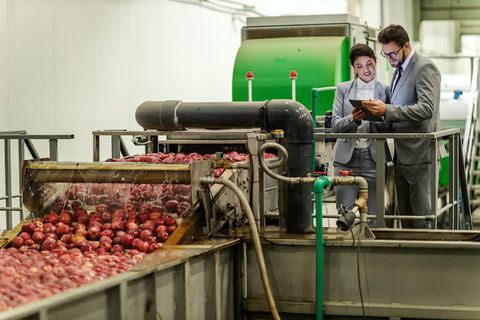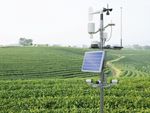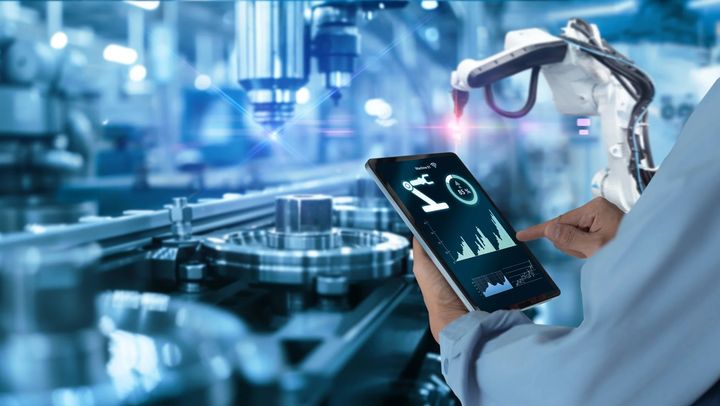
Tips and Advice for Implementing Industrial Sensor Solutions
Industrial sensors are the fundamental components of modern automation and control systems. In essence, they are sophisticated devices designed to detect, measure, and convert various physical parameters from the environment into electrical signals or data. These parameters can include everything from temperature, pressure, and humidity to motion, light, and chemical composition. Unlike consumer-grade sensors, industrial sensors are built to withstand harsh environments, including extreme temperatures, vibrations, and corrosive substances, ensuring reliability and accuracy in demanding settings.
The Importance of Industrial Sensing

In 2025, industrial sensor technology is more important than ever. It is the core enabler of the Industrial Internet of Things (IIoT), a network of interconnected devices that collect and exchange data. This technology is no longer a luxury but a necessity for any organization looking to remain competitive, efficient, and safe.
Who It Affects
Manufacturing and Production: Factories of all sizes rely on sensors to monitor production lines, track inventory, and ensure product quality.
Logistics and Supply Chain: Sensors are used to track assets and monitor the environmental conditions of goods in transit, especially for sensitive items like food and pharmaceuticals.
Energy and Utilities: They are crucial for monitoring pipelines, power grids, and smart meters, enabling better resource management and early detection of potential failures.
Agriculture: In smart farming, sensors monitor soil moisture, temperature, and sunlight to optimize crop yield and water usage.
Safety and Maintenance Teams: These teams depend on real-time sensor data to prevent equipment failure and ensure a safe working environment for employees.
Problems It Solves
Predictive Maintenance: Instead of waiting for a machine to break down, sensors can continuously monitor its health, including vibrations, temperature, and power consumption. This real-time data allows for maintenance to be scheduled proactively, preventing unexpected and costly downtime.
Quality Control: In manufacturing, maintaining precise conditions is vital. Temperature and humidity sensors, for example, ensure that products are produced under optimal conditions, leading to consistent quality and reduced waste.
Enhanced Safety: Motion sensors and proximity sensors are integrated into machinery to detect the presence of workers. If a person enters a dangerous zone, the sensor can automatically shut down the machine, preventing serious accidents.
Operational Efficiency: By providing real-time data on resource consumption, sensors help companies identify inefficiencies and optimize processes, leading to significant savings in energy, raw materials, and labor.
Improved Decision-Making: With a constant stream of data from across an operation, managers can use data analytics and machine learning to gain deeper insights into their processes, allowing them to make more informed decisions and improve overall productivity.
Recent Updates and Trends
The field of industrial sensors is evolving rapidly, driven by advancements in artificial intelligence, connectivity, and hardware design. Several key trends from late 2024 and mid-2025 are shaping the future of industrial sensing.
AI and Edge Computing: A major shift is occurring with the integration of AI directly into the sensors themselves. Instead of sending all raw data to a centralized cloud for processing, these "smart sensors" can analyze data at the "edge" of the network. This edge AI capability allows for real-time decision-making, such as a temperature sensor immediately adjusting a climate control system without latency. This reduces the need for constant network connectivity and significantly lowers data transmission costs.
Miniaturization and Wireless Power: Sensor technology is becoming smaller and more discreet. This miniaturization makes it easier to embed sensors into complex machinery or small components. Simultaneously, there is a push towards self-powering or energy-harvesting sensors that can draw energy from vibrations, heat, or ambient light. This advancement dramatically reduces the maintenance burden and eliminates the need for battery replacements in hard-to-reach locations.
Enhanced Cybersecurity for IIoT: As industrial sensor networks become more interconnected, they also become more vulnerable to cyberattacks. A significant trend in 2025 is the development of sensors with security-by-design principles, including built-in encryption and secure boot capabilities. This is a direct response to the increasing threat of hackers who could manipulate sensor data to cause a system failure or disrupt operations.
Multi-Sensor Fusion: Modern industrial applications are increasingly relying on data from multiple types of sensors to get a more complete picture of a system. A motion sensor might be combined with a camera and a proximity sensor to provide a more accurate and reliable safety system for a robotic arm, reducing the chance of false positives and increasing overall safety.
Laws and Policies
The use of industrial sensor technology is often influenced by a variety of regulations and government initiatives aimed at promoting safety, efficiency, and a new era of digital manufacturing.
Safety and Health Regulations: Many countries, including India, have strict occupational safety and health standards. Regulations like the Factories Act, 1948 and subsequent state-level rules often mandate the use of safety systems and controls on machinery. This includes the use of sensors for presence detection, emergency stops, and interlock systems to protect workers from injury. Compliance with these regulations is a primary driver for the adoption of advanced motion and proximity sensors.
Environmental and Energy Policies: Governments worldwide are pushing for greater energy efficiency and sustainability in industrial operations. Policies and programs that offer incentives for companies to reduce their carbon footprint often encourage the use of smart sensors to monitor and optimize energy consumption. By providing real-time data on energy usage, temperature sensors can help businesses comply with energy efficiency mandates.
Industry 4.0 Initiatives: The Government of India has been actively promoting the adoption of advanced manufacturing technologies under programs like "Make in India" and the SAMARTH Udyog Bharat 4.0 initiative. These programs aim to boost the country's manufacturing competitiveness by encouraging the integration of digital technologies, including industrial sensors and automation. The focus is on creating a supportive ecosystem for the development and deployment of IIoT solutions.
Tools and Resources
For those looking to learn more about or implement industrial sensor technology, a variety of tools and resources are available to help guide the process.
Independent Industry Associations: Organizations like the International Society of Automation (ISA) provide crucial standards, technical reports, and training programs that are essential for professionals in the field.
IIoT Platforms: To make sense of the vast amount of data generated by a network of sensors, a business needs a robust platform to manage and analyze it. Services like AWS IoT, Microsoft Azure IoT, and Google Cloud IoT Core provide the infrastructure to connect, process, and analyze sensor data on a massive scale.
Sensor Manufacturer Websites: Many of the world’s leading sensor manufacturers—such as Siemens, Honeywell, ABB, and Schneider Electric—offer extensive technical documentation, application notes, and educational content on their websites. These resources can be invaluable for understanding the capabilities and proper installation of specific sensors.
Online Technical Communities: Websites and forums dedicated to industrial automation and robotics provide a space for engineers and enthusiasts to share knowledge, ask questions, and collaborate on projects. These communities are excellent for staying up-to-date on the latest real-world applications and solutions.
Frequently Asked Questions
What is the difference between a smart sensor and a traditional sensor?
A traditional sensor simply measures a physical parameter and outputs a signal. A smart sensor is more advanced; it contains a built-in microprocessor that can process and analyze the data it collects. This allows it to perform tasks like self-calibration, local data analysis (edge computing), and communication with other devices without needing to send all data to a central hub.
How do industrial sensors connect to each other?
Industrial sensors use a variety of communication protocols. Common wired methods include Ethernet/IP and Profibus. For wireless connectivity, technologies like Wi-Fi, Bluetooth Low Energy (BLE), and Zigbee are used for short distances, while LoRaWAN and cellular networks (5G/4G) are used for long-range communication.
Are wireless industrial sensors as reliable as wired ones?
Modern wireless sensors have become highly reliable. While wired connections were traditionally preferred for their stability and power supply, advancements in wireless technology have made them suitable for many industrial applications. Factors like signal interference and battery life need to be considered, but wireless sensors offer greater flexibility and lower installation costs.
How long do industrial sensors last?
The lifespan of an industrial sensor varies widely depending on its type, the harshness of its operating environment, and its power source. Many passive sensors, with no moving parts, can last for decades. Wireless sensors that rely on batteries typically have a lifespan of several years, while self-powered sensors can potentially last as long as the equipment they are monitoring.
Conclusion
In 2025, industrial sensor technology is the engine of the global move toward smarter, more connected factories and infrastructure. By providing real-time data on temperature, humidity, motion, and countless other parameters, these devices are enabling a new level of efficiency, safety, and productivity. The ongoing trends of AI integration, miniaturization, and enhanced security are making these solutions more powerful and accessible than ever before. As businesses continue to digitize their operations, industrial sensors will remain the critical foundation upon which the future of automation is built


